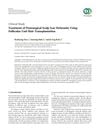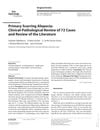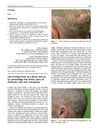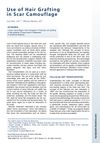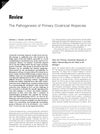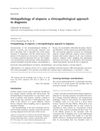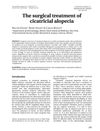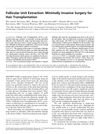Surgical Management Of Scarring Alopecia
October 2022
in “
IntechOpen eBooks
”
cicatricial alopecia primary cicatricial alopecia secondary cicatricial alopecia hair follicle destruction inflammation immunosuppressive agents antimicrobial agents surgical treatment scar tissue follicular unit extraction hair transplantation scar assessment graft viability tissue engineering scar-less wound healing scar maturation PCA SCA FUE
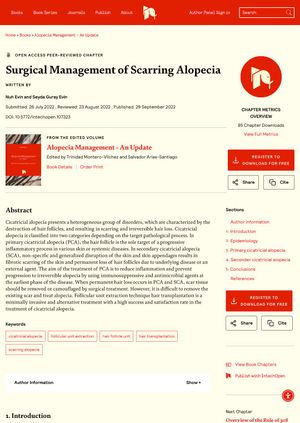
TLDR Hair loss due to scarring can be treated by reducing inflammation, removing scar tissue, and transplanting hair. The Follicular Unit Extraction technique is effective but requires skill and time. Future focus should be on scar-less healing methods.
Cicatricial alopecia, a group of disorders causing permanent hair loss due to hair follicle destruction, is divided into primary cicatricial alopecia (PCA) and secondary cicatricial alopecia (SCA). PCA is caused by inflammation around the hair follicle, while SCA results from generalized skin disruption. The treatment goal for PCA is to reduce inflammation and prevent progression using immunosuppressive and antimicrobial agents. When permanent hair loss occurs, surgical treatment is used to remove or camouflage scar tissue. The follicular unit extraction technique hair transplantation is a successful treatment for cicatricial alopecia. For SCA, treatment involves patient selection, scar assessment, and various medical and surgical procedures. The survival rate of transplanted follicular units is over 90% in healthy areas, but varies in scarring alopecia. An average 80% or over of graft viability is considered successful in scarring alopecia. The document also discusses the Follicular Unit Extraction (FUE) technique, which is safe, effective, and repeatable, offering several advantages such as minimal invasiveness, less pain, high graft survival rate, and natural-looking hair growth. However, it is time-consuming and requires technical skills. Future studies should focus on tissue engineering to develop scar-less wound healing and increase scar maturation.





